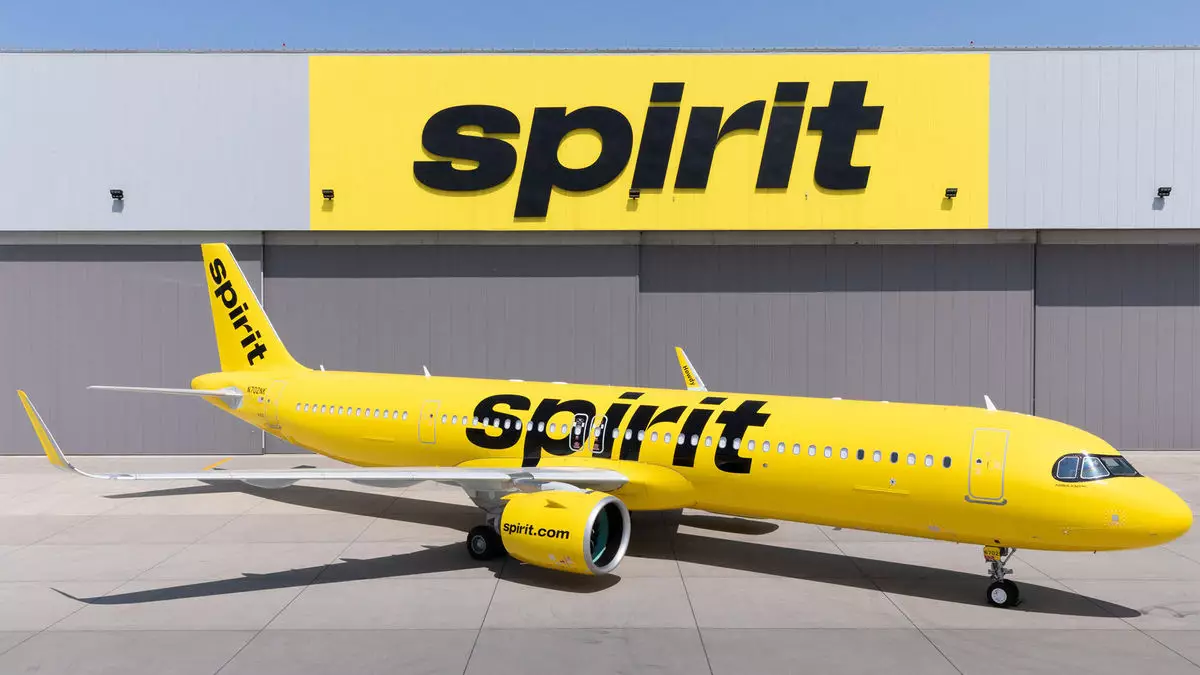In a strategic move aimed at revitalizing its business, Spirit Airlines has initiated a prearranged Chapter 11 bankruptcy filing. This decision, dated November 18, reflects the airline’s commitment to restructuring its financial obligations and positioning itself for sustained operational efficacy. However, industry analysts offer a more sobering perspective on Spirit’s situation, suggesting it may have a limited time frame to rectify its economic distress. With the air travel market continually evolving post-pandemic, Spirit Airlines faces not just immediate challenges but also a looming threat to its longer-term viability.
As part of its bankruptcy proceedings, Spirit has reached a restructuring agreement intended to alleviate its significant debt load. This includes a pivotal conversion of $795 million in debt into equity for existing bondholders, complemented by a new capital injection of $350 million. Additionally, the bondholders have committed to providing a $300 million loan, which is expected to stabilize Spirit’s cash reserves during the restructuring period. If sanctioned by the court, these measures will enable Spirit to defer $1.6 billion in debt obligations otherwise due by September 2026, shifting the burden to 2030. However, equity holders will face a harsh reality: their shares will likely be rendered worthless in the wake of this agreement.
During the bankruptcy process, operations will remain uninterrupted; passengers can continue to use flight credits and loyalty points without hindrance. Spirit Airlines expressed optimism that it would emerge from bankruptcy in the first quarter of 2025, aiming to offer competitive pricing and an improved service model. The sentiment echoes a broader trend seen among airlines that have similarly restructured to restore profitability.
Once regarded as a leading contender within the U.S. airline sector, Spirit hasn’t been immune to the seismic shifts in consumer preferences, particularly in light of the pandemic. Fluctuating passenger expectations, now skewed toward premium experiences, have adversely affected its business model. After posting nearly $2 billion in net operating losses since 2020 and an alarming negative operating margin of 27% in the third quarter, the airline’s prospects appear grim.
Moreover, earlier aspirations for a $3.8 billion merger with JetBlue were dashed by antitrust concerns. The federal government’s intervention highlighted the competitive pressures in the airline industry, underscoring Spirit’s struggle to compete in a landscape increasingly gravitating toward premium offerings. In response, Spirit has attempted to pivot by launching a new fare structure aimed at attracting higher-spending travelers, while also committing to cost-cutting measures, including a staggering 20% reduction in capacity for the fourth quarter.
The very essence of Spirit’s brand has long been associated with no-frills services, a characteristic that has garnered both critics and defenders. As Scott Keyes, founder of the travel service Going, points out, changing public perception will be a herculean task. Spirit’s image, which has often been the subject of comedic derision in late-night television, creates an uphill battle for customer acquisition among a demographic now increasingly inclined toward comfort and premium services.
Currently, the airline’s proposals for enhanced customer service, which include complimentary snack options and free WiFi for loyalty members, along with the introduction of a premium economy section, may not sufficiently reshape ingrained perceptions. Keyes suggests that any significant transformation is fraught with challenges, particularly as current habits of travelers remain skeptical of what Spirit has to offer beyond its foundational low-cost approach.
Despite the restructuring measures, Spirit is in a race against time. Analysts emphasize that maintaining a liquidity ratio of approximately 20% of annual revenues is critical for operational stability. For Spirit, whose revenue in 2023 reached $5.4 billion, this translates to an urgent need for effective cash flow management. With a projected liquidity of $840 million at the end of 2024, Spirit must quickly transition from a cash-burning business model back toward profitability not long after exiting bankruptcy.
Analysts such as George Ferguson highlight that an effective turnaround will take time and may not yield immediate results. Dependence on additional financial support just to stabilize its operational framework raises red flags about the robustness of Spirit’s future strategies. Nonetheless, potential cash inflows from engine manufacturer Pratt & Whitney may provide some marginal relief in the interim.
Spirit Airlines stands at a crossroads fueled by both opportunity and threat. Its ability to navigate the harsh realities of a post-pandemic travel environment, foster a new perception, and forge a viable path forward will determine whether it can reclaim its position in the competitive airline industry or face the prospect of an acquisition or liquidation in the coming years. The time for decisive actions and sustainable strategies has never been more pressing.


Napsat komentář